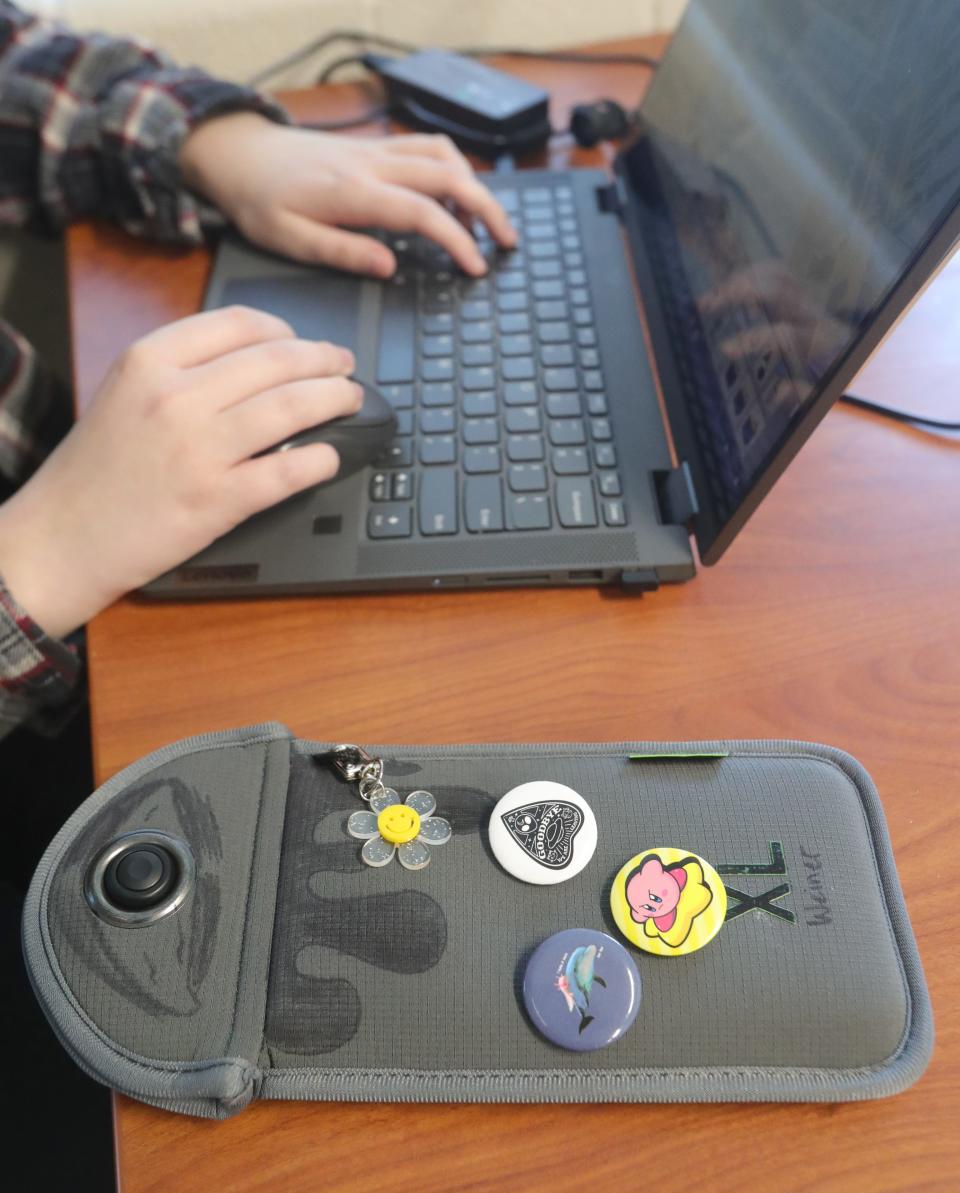Ohio school cellphone ban? Here's how Columbus area districts handle student phones.
- Oops!Something went wrong.Please try again later.
- Oops!Something went wrong.Please try again later.
Are your kids distracted by cellphones in class? If you check the odds, they are.
In 2023, as many as 97% of kids aged 11- to 17-years-old used their phones during school hours, for a median time of 43 minutes a day, according to a study from Common Sense Media and the C.S. Mott Children's Hospital. And last week, Ohio Gov. Mike DeWine and Lt. Gov. Jon Husted held a roundtable discussion about the importance of cutting down cellphone use in schools, The Dispatch previously reported.
"Kids and parents are asking us to save them from themselves because the cellphones in the lives of children are becoming very addictive," Husted said during the Wednesday discussion.

During the meeting, the two asked school districts to consider limiting or banning cellphone use by students, citing research showing cellphone use negatively affects students' mental health, academic performance and social well-being.
So what do districts in central Ohio do, and what do experts say should be done?
What are some central Ohio schools doing?
Most districts in central Ohio have policies limiting cellphone use during school hours.
For example, the region's largest schools, including Columbus, Olentangy, South-Western and Westerville, all have student conduct policy prohibiting cellphone use during class time unless otherwise instructed by their teacher or principal.
In Dublin City Schools during the past year middle schoolers in sixth through eighth grade at two middle schools were not allowed to use their phones during the school day at all, including during lunch or other down time, board member Diana Rigby said. She said she has heard other parents, teachers and administrators asking when the policy will be coming to their schools.
“These kids need this," Rigby said. "You have to recognize that we are human beings, we have a need for human interaction. We have a need for face-to-face conversation. We have a need for empathy. And all of these things cannot be done behind the cellphones."
And some districts throughout Ohio, like Akron Public Schools and Fairborn City Schools outside Dayton have taken the issue a step further and implemented Yondr phone lock systems, which are sleeves students place their phones in and lock during the day and unlock when they leave school.
At last week's roundtable, Gahanna-Jefferson Public Schools Superintendent Tracy Deagle said the district chose not to use a locked pouch system after some parents expressed concern about school safety and said they wanted to be able to reach their child in an emergency.

Deagle also said she believes there's a connection between student cellphone use and the teacher shortage.
"I know that our staff feels safer in the classroom when they don't fear being recorded," Deagle said last week. "It overall contributes to a healthy climate and culture which will contribute to getting more young people to enter the (teaching) profession."
Should students have devices in class?
Existing studies give evidence that allowing phones in the classroom negatively impacts test scores and long-term learning retention, according to Harvard University. However, the research also notes that many bans are repealed due to student and parent unpopularity, and in urban districts, often because cell service remains the only method of connectivity for some students.
Jason Rawls, Ohio State University music professor and former K-12 educator, said it is time to start thinking of cellphones not just as phones — but miniature computers — and how teachers can turn off-topic phone use into on-topic use by using it as a research or lesson tool.
"As an educator, in this day and age, it's probably hard to just, you know, fight the phone (use) thing," Rawls said. "You're going to spend more of your time fighting the phones, so instead of doing that, to me, it makes more sense to use the phone as part of your lesson or use the phone to your advantage as an educator."
A 2021 U.S. Department of Education study of existing research found that while some studies have shown that cellphone use in a classroom can help prepare students for work and inspire innovation, others have a detrimental effect of being distracting from education, as well as a rise in problems like cheating and teen sexting.
Rawls said there are many opinions on the topic of phones in schools and whether schools should limit or ban them, but one thing is for sure: "these phones aren't going away."
"This stuff is not stopping," Rawls said. "So we really should make it our friend instead of our enemy."
USA Today Ohio Statehouse Bureau reporter Erin Glynn contributed to this report.
@Colebehr_report
Cbehrens@dispatch.com
This article originally appeared on The Columbus Dispatch: What are central Ohio schools doing about cellphone use in class?

